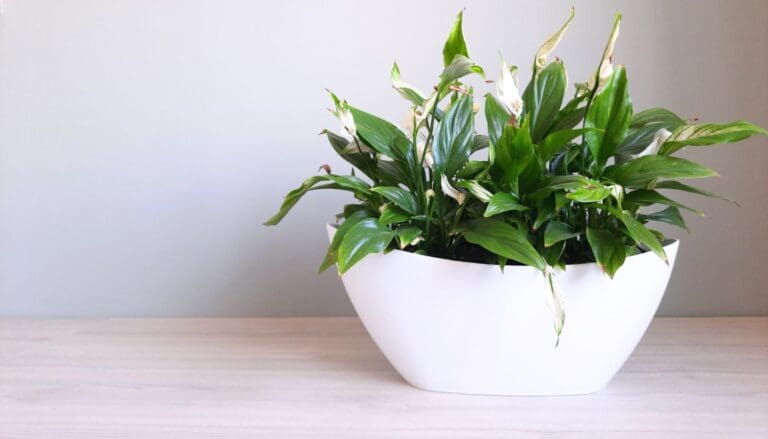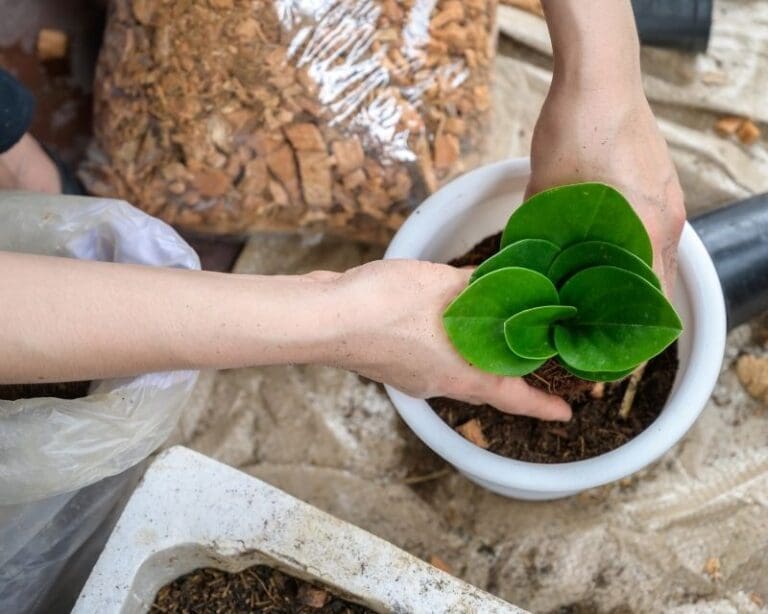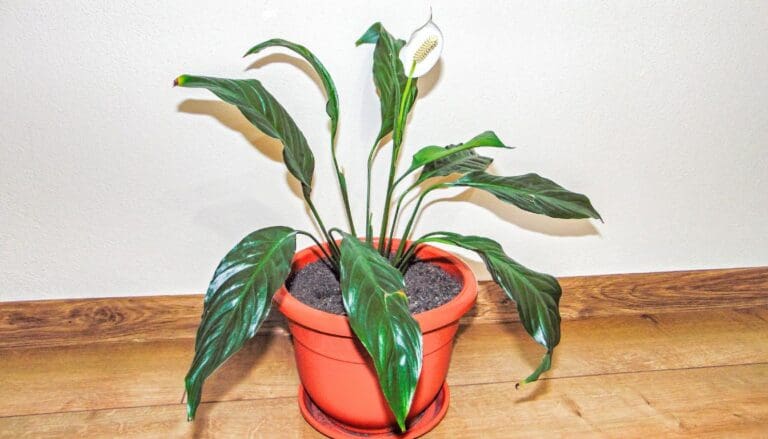Do ZZ Plants Get Bugs? (Common bugs+How To Get Rid)
Bugs are a common problem that every plant owners have to deal with at some point in their life. Even your ZZ plant might get infested with it. But what are the common bugs that attack your ZZ plant, and how can you deal with them? Let’s find out!
Aphids, mites, whiteflies, scales, mealybugs, and gnats are common bugs attracted to the ZZ plant. Avoid overwatering, keep the plant in a well-ventilated area, mist a diluted neem oil solution, and regularly lookout for pests to keep your ZZ plant pest-free.
These bugs are hard to spot with our eyes until they overtake your plants entirely. It’s difficult to guess where these bugs came from.
But now, when they are already there, it’s even more necessary to know how to get rid of them at first before they keep spreading any further.
They often attack the underside of the leaves and feed on all the nutrition of the plant, making the ZZ plant fall sick.
In most cases, we get to know that the plant is under bug attack when the plant gets highly infested, but till then, their population gets so much increased that it becomes even harder to revive the plant.
These bugs are so stubborn that even if you make them rush away, they will be back again in a few days. So it becomes so necessary to kill them instead.
No worries, you don’t have to be an entomologist or don’t need a degree to fight these pests. Simple guidance and knowledge are enough to save your ZZ plant from these bugs, and that’s what this article is about.
Also read: How to tell my ZZ plant dying?
Please note: Simplify Plants is reader-supported. Some links in the post are affiliate links and I get a commission from purchases made through links in the post.
Common bugs that attack the ZZ plant
Many bugs can infest your ZZ plant. However, some commonly found bugs include:
Aphids
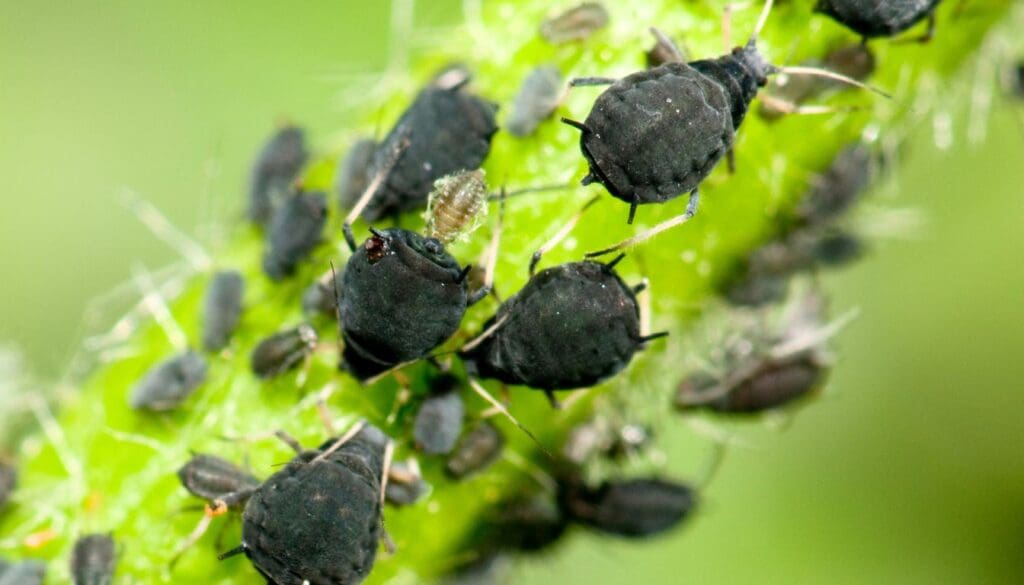
Aphids are tiny, soft-bodied insects that attack and feed off the houseplants, including the ZZ plant, making the plant weaker and prone to several diseases.
It needs to be treated ASAP not only because they damage your plant but also because they can spread throughout your home, which can be a pain to deal with.
Typically, the aphids problem invites ants too; both species have a mutually beneficial partnership.
Aphids suck on plants, feeding off the plant’s nutrient-rich sap and then secrete sugary honeydew syrup. Ants love this honeydew and will shepherd and protect aphids from other insects that eat the aphids.
So aphids are not only harming your ZZ but are also inviting colonies of ants to your house who will do whatever they can do to protect their honeydew secreting friends.
Spider Mites

Spider mites are tiny little bugs that have an oval-shaped body with a reddish-brown or pale color tone. They usually feed on the plant tissues and sap on the lower side of the leaves.
If you check the lower side of the leaves, you will see them spinning their white web all over. Just like other pests, they also secrete honeydew which attracts ants and molds towards the plant.
These mites usually lay their eggs in winters which hatch in early spring. Once their lifecycle begins, they can quickly multiply and take over your ZZ plant completely.
Some common problems that you will see on a plant infected by spider mites include:
- Tiny spots on leaves
- Discoloration of the leaves
- Leaves start falling off
- Curling in the leaves
- Wilting of the plant
White Flies

As the name suggests, these flies are white. These are tiny, soft-bodied flying insects that feed on the underside of plant leaves.
These flies are a significant threat to many indoor plants, including ZZ plants. You can identify them by their waxy wings.
Both nymphs and adult whiteflies damage the ZZ plant by sucking the juice and cause stunted growth and reduced yields. Eventually, the plant becomes weaker and susceptible to disease.
Many bugs, including whiteflies, secrete honeydew, making leaves sticky and covered with a black sooty mold. They also act as a carrier of various deadly diseases from one plant to another.
Scales

These deadly bugs are dormant mainly in winters and can live up to a year, throughout which they can lay thousands of eggs.
They use their well-developed sharp needle-like mouthpart into leaf vain and keep feeding on the plant until the plant is wilt or dead.
There are two types of scales:
- Hard scales: Hard scales are also referred to as armored scales due to the hard oyster-like coating that protects them.
- Soft scales: These are the scales without protection. They have a waxy kind of coat on them, perhaps to protect themselves from specific problems that these scales go through in the natural world.
Gnats

Gnats are tiny little flies like insects that are dark brown or sometimes black. There are two types of these Gnats, non-biting and biting Gnats.
The ones that you’ll typically find within your home are fortunately non-biting ones. The most common types of non-biting gnats that you’ll find around your ZZ plant are fungus gnats.
Fungus Gnats, the name comes from them feeding on a fungus found within the soil. You can mostly see these gnats during the spring or summer season.
As they are attracted to carbon dioxide, they sometimes can be seen flying right up on your face.
Although these bugs don’t harm the plant in small numbers but as they grow their population so quickly that in just a few days, an army of gnats will be ready to attack your ZZ plant.
These Gnats start as an egg. Usually, it lives in the top layers of the soil in organic matter. Later they start to hatch and evolve into their larvae stage, which is the stage to worry about as they start to feed on the plant’s root and the fungus in the soil.
Once they completely turned into an adult, you can see them bussing around the ZZ plants. These fully-grown gnats then start to breed in soggy soil. And the process keeps going on.
Generally, the overwatered plants or plants in a pot with inappropriate drainage holes tend to suffer this situation because the soil in such pots mostly stays soggy.
Mealybugs

These soft, hairy, white, and sticky bugs get into the plant’s crevices, and you are not going to like what they are about to do with your ZZ.
These bugs feed on the sap and juice of the plant. Once they reached the plant, they kind of get stick to it, and they keep on eating and laying eggs to increase their population.
An outdoor ZZ plant is relatively safe from these bugs as several predator species feed on these mealybugs, while indoors, these harmful bugs are way safer and can increase their population much faster.
If you have mealybugs in your garden, you may generally see ants as well. Many people complain that they have ants around their ZZ plant.
Even after trying several methods to get rid of them, they keep on coming again. Interestingly, these ants have a bizarre mutuality connection with the mealy bugs, same as in the case of Aphids.
So, what happens is these bugs feed on the plant’s leaves and get sugary substances, basically the plant juice out of the plant.
So now the ants get attracted towards the food and, in return, protect these mealy bugs. This bond works like a mutual understanding, and as a result, it becomes challenging to get rid of these mealy bugs.
How do I get rid of bugs in my ZZ plant?

We have discussed some of the most common bugs that damage our ZZ plants. So, now that we know what we are dealing with, we will learn more about how we can get rid of all of them.
Shampoo
To wash the bugs, especially mealy bugs, you need to use about one tablespoon shampoo mixed with 4 ounces of water. Fill the solution into a spray bottle, and prepare for the battle.
The concentration of shampoo in the solution could also depend upon how intense the problem of infection is. Whenever using this solution on the plant, shake the bottle well so the solution gets mixed properly.
Now, spray it nicely all over your ZZ plant, including the underside of the leaves. Within a few hours, you’ll notice these bugs dying, and also, the number of ants gets reduced too.
Use the method once every three days for two to three months for complete results. Always make sure you spray your ZZ plant in the morning.
And at last, wash off the solution from the plant using distilled or purified water so by the time the sun will be up, your plant will be healthy and active for a fresh new start.
Neem oil
As an insecticide and fungicide, Neem oil is counted among the best organic methods to get rid of bugs.
It contains a toxic component that acts as a mind-disturber for these bugs. This component disturbs all the bugs from sucking the sap out of the plant, prevents them from reproducing, and can eliminate the eggs before reaching their hatching state.
If appropriately used, neem oil can save your ZZ plant from all bug species that are waiting for an opportunity to damage your plant.
Here’s how to use it on plants: Take one liter of water and mix about 3-5ml of neem oil in it and mix the solution well. Put it into a spray bottle and use it twice or thrice a month.
Many growers make the most common mistake of using neem oil as a treatment agent when bugs already infest the plant.
It may work sometimes, but the hidden fact that you need to know is that the sunlight breaks down the toxic component in neem oil within the duration of roughly around 2-3 days.
Right at the moment when the effect gets down, the bugs also get back to their work. So, it is highly recommended to use neem oil as a preventive measure.
If you are using neem oil to get rid of bugs that have infested your ZZ plant, then make sure you use them in the morning and spray the plant every 2-3 days for the next one month to eradicate those bugs altogether.
I personally recommend Organic Neem Bliss, Which I got from amazon. It works like a charm.
Rubbing alcohol and Dish soap
The best thing about this method is that you probably don’t need to visit a store or purchase it online and wait for it to arrive. All you need is a spray bottle, rubbing alcohol, mild dish wash, cotton balls, or tissue paper.
- The first step is to remove all the bugs visible on the plant using rubbing alcohol and cotton balls.
- Dip the cotton ball into the rubbing alcohol and wipe the plant using it. Do it gently, don’t rush as it can tear or break the plant parts.
- Alcohol dissolves the protective covering of the pests, and the axon kills them instantly.
- Now, it’s time to make a particular solution using dish soap and rubbing alcohol.
- To prepare this solution, take 500 ml of water and pour about one cup of rubbing alcohol and a few drops of dish soap in it.
- Mix all the ingredients well and fill the solution into the spray bottle.
- At last, spray the solution properly on the plant.
- Most of them may not be visible to the naked eye, so don’t make the mistake of missing even a single portion.
Sticky traps

These traps are one of the inexpensive, non-toxic, and least effort methods of pest management that a lot of growers use.
These simple traps come in various designs that can either be hung or placed strategically around the plant to form a protective barrier.
If you are concerned about flying bugs, you must give it a try. Don’t worry; they aren’t poisonous.
The yellow-colored trap is often the preferred choice among professional growers as it attracts the bugs, and because it’s sticky, they get trapped onto it.
Hydrogen peroxide
Hydrogen peroxide is used to clean out wounds and can be found in most of the medicine cabinets. It can also be used as an organic product suitable for gardening.
It contains no chemicals that are harmful to humans and pets. It is another inexpensive method to keep the plants free from bugs.
Hydrogen peroxide is a chemical, but it quickly composes of water and oxygen, due to which it’s safe to be used even in organic gardening in varying dilutions.
It’s a colorless and orderless liquid and a commonly used medical and houseplant disinfectant.
Its working principle is straightforward and easy to understand. What happens is the adult bugs do not appreciate hydrogen peroxide.
Whenever you notice harmful bugs on your ZZ plant, spray some hydrogen peroxide solution on them.
Hydrogen peroxide is technically water with an extra oxygen atom, and this extra oxygen is capable of killing the eggs and larvae by making an unacceptable condition for their survival.
To make an effective hydrogen peroxide spray, mix one tbsp of hydrogen peroxide into a gallon of water.
Shake it, then pour it into a spray bottle, and it’s ready to use. Although it is fast degrading yet using it twice a week is good enough.
Shower the plant
This method may or may not actually kill all the bugs but definitely can wash away most of them. All you have to do is wash the plant with a high-pressure water stream.
Please make sure you are careful with it, or you might end up harming your plant badly. Also, make sure there is no standing water in the pot after you wash them.
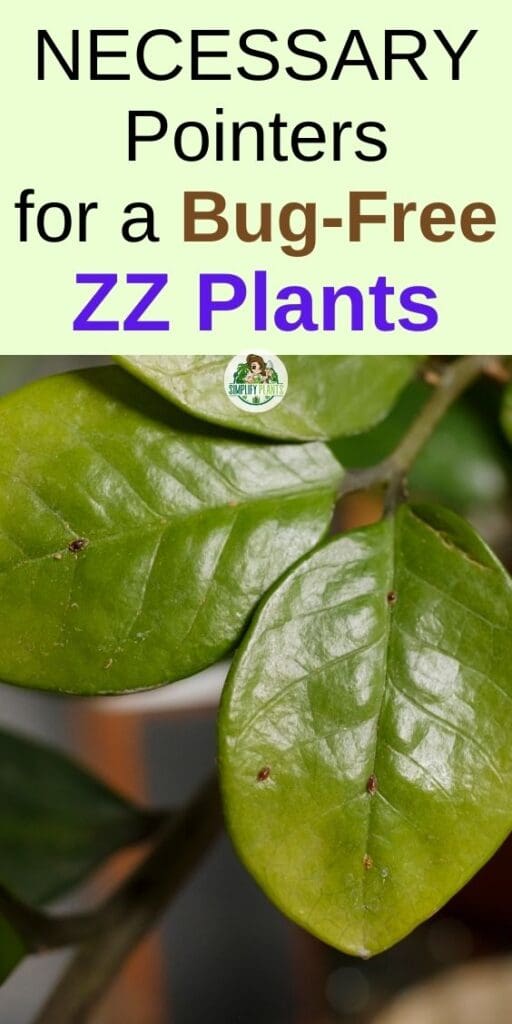
Sources: Common insect pests and diseases.
Recommended Garden Supplies
| Product Image | Our Recommended Gardening Supplies | Check Offers! |
|---|---|---|
Top Top
Top
Top
Top
Top
Top
Top
Top | rePotme Houseplant and Tropical Classic Potting Soil Mix | Check Offer On Amazon |
 Top
Top
Top
Top
Top
Top
Top
Top | Espoma Organic Indoor Plant Food | Check Offer On Amazon |
 Top
Top
Top
Top
Top
Top
Top
Top | GooingTop LED Grow Light 6000K Full Spectrum Clip Plant Growing Lamp | Check Offer On Amazon |
 Top
Top
Top
Top
Top
Top
Top
Top | Soil Moisture Meter | Check Offer On Amazon |
 Top
Top
Top
Top
Top
Top
Top
Top | Govee Hygrometer Thermometer, Bluetooth Enabled! | Check Offer On Amazon |
 Top
Top | LEVOIT Humidifiers for Large Room(Best For Plants) | Check Offer On Amazon |
 Top
Top
Top
Top
Top
Top
Top
Top | Upgraded DIY Automatic Drip Irrigation Kit, 15 Potted Houseplants Support | Check Offer On Amazon |
 Top
Top
Top
Top
Top
Top
Top
Top | Stainless Steel Heavy Duty Gardening Tool Set | Check Offer On Amazon |
 Top
Top
Top
Top
Top
Top
Top
Top | Bonide Insecticidal Soap | Check Offer On Amazon |
 Top
Top
Top
Top
Top
Top
Top
Top | Bonide 32 oz Spray Neem Oil for Organic Gardening | Check Offer On Amazon |
 Top
Top
Top
Top
Top
Top
Top
Top | Garden Safe Fungicide | Check Offer On Amazon |

